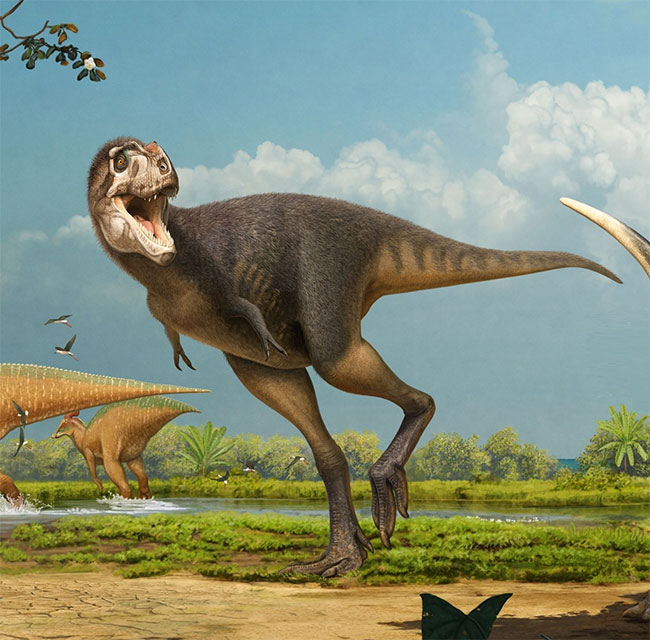72.5 million year old 'crusher monster' discovered to be an unknown species
Scientists have successfully recreated a 6.3m long beast from a fragmented fossil skeleton excavated in the state of Coahuila - Mexico.
A study led by Dr Héctor Rivera-Sylva from the Desert Museum (Mexico) and Dr Nicholas Longrich from the University of Bath (UK) has identified a new species of beast that roamed North America 72.5 million years ago.
Previously, part of the skeleton of this monster was found in Campanian rocks in the state of Coahuila - Mexico.

The new monster species has been named Labocania aguillonae.
Campanian is the last geological layer of the Late Cretaceous, the end of the Cretaceous period, which was also the boom period of many dinosaur species.
Named Labocania aguillonae , the beast was an ancient predator with the characteristic body shape of a theropod dinosaur and a relative of the T-rex.
According to an article published in the scientific journal Fossil Studies, this monster was about 6.3m long when it was alive, which is relatively smaller than T-rex.
Some anatomical features have helped scientists identify this beast as a previously unrecorded species . However, other features indicate that it is a close relative of several tyrannosaurs in the region: Labocania anomala, Bistahieversor sealeyi and Teratophoneus curriei.

Portrait of the new monster species recreated by the research team - (Graphic image: Karkemish).
This skeleton has contributed to showing that in the land that is now Mexico, the tyrannosaur family thoroughly dominated the food chain by evolving into many separate species and branches.
The new discovery makes scientists more confident that there may be many more species of tyrannosaurus rex that have not yet been discovered in the southern region of the North American continent.
Additionally, this helps to show how rapidly this fearsome dinosaur clan evolved during the late Cretaceous period.
About 100 to 89 million years ago, tyrannosaurs were relatively small, unspecialized, and poorly diversified.
However, by the Campanian stage - which began 83 million years ago - they had undergone a major disintegration, diversifying and giving rise to larger, more specialized forms.
Perhaps this group of dinosaurs would have been even more terrifying if it weren't for the Chicxulub asteroid disaster 66 million years ago, which abruptly ended the age of dinosaurs right when they were in the golden age of evolution.
- Discovering fossils of 250 million-year-old sea monsters
- The constant debate about the 300 million-year-old Tully monster
- New species discovered 3.7 million years old: The bearer of 'bear steps'
- 10 most famous aquatic monsters of all time
- Discovered a new species of platypus
- Detection of 180 million year old sea monster fossils
- A 375-million-year-old sea monster that grows legs reveals the secret to changing the earth
- The oldest species of 'vampire squid' is named after US President Joe Biden
- A new species of sea monster 'emerged' after 67 million years of hiding in Antarctica
- Peru discovered strange ink fossils with 85 million years
- The 70-million-year-old plesiosaur fossil resembles the Loch Ness monster
- Detecting more 10 million-year-old jaw bone fossils in Kenya
 Discovered an ancient centipede fossil 99 million years old
Discovered an ancient centipede fossil 99 million years old Discovered bat-like dinosaurs in China
Discovered bat-like dinosaurs in China Discovered a 200-year-old bronze cannon of the coast
Discovered a 200-year-old bronze cannon of the coast Discover 305 million-year-old spider fossils
Discover 305 million-year-old spider fossils